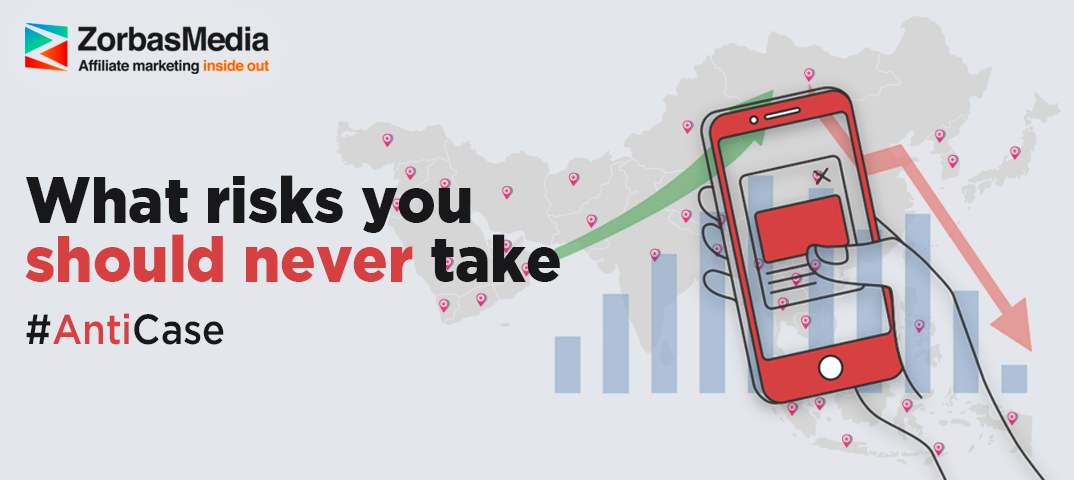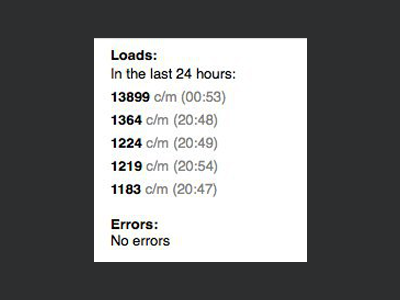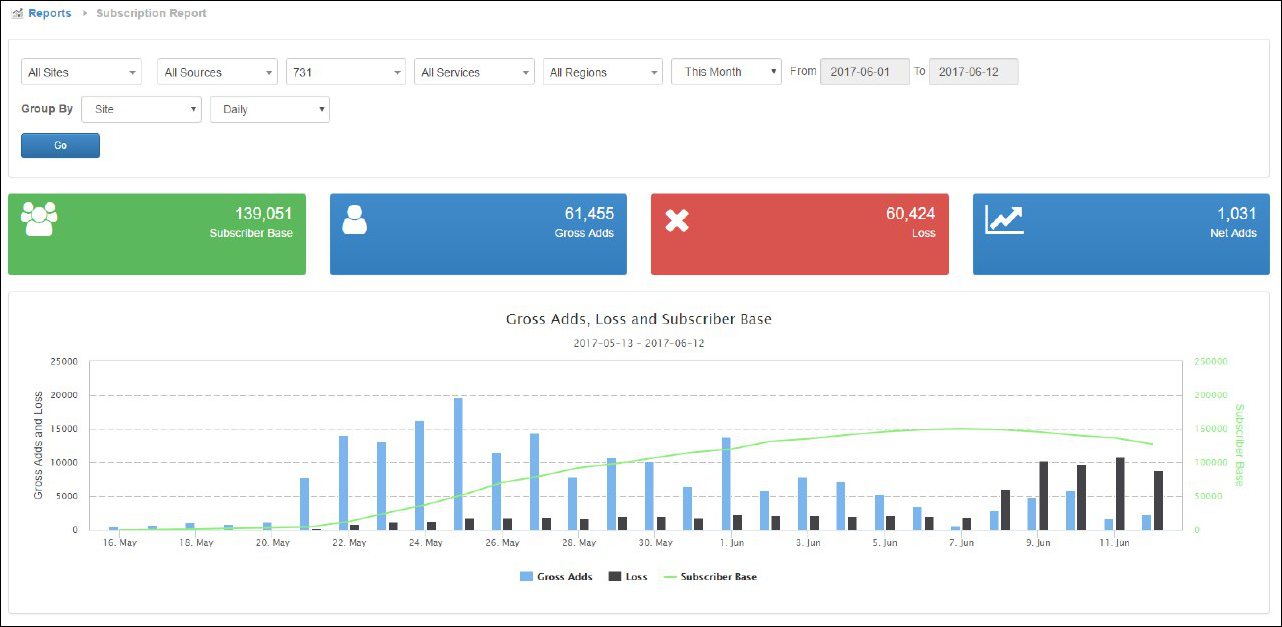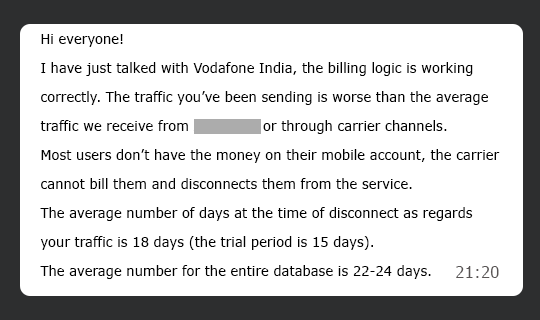
Hi everyone!
I’ve been involved in affiliate marketing for several years already and I’ve had my hands on a variety of verticals and traffic sources ranging from popup traffic, teaser ads and myTarget to Facebook, push notifications and adult native ads. Today I’d like to touch upon anti-cases and share with you a story about one of my affiliate failures.
Affiliates often learn from case studies written by other people, borrow new ideas and approaches and get motivation to reach new heights in our harsh business. However, only a few pay attention to anti-cases, stories about affiliates who ran traffic but failed to secure a profit or who launched campaigns but later on a part of the leads they generated or all of them were rejected or a network refused to pay.
Hardly anyone writes about such failures. Some are too embarrassed, some attach little importance to these incidents, while some try to forget it as soon as possible. Nevertheless, their negative experience is shared by many other affiliates, and the knowledge derived from failures is invaluable.
I’d like to share my anti-case with you. Hopefully, my readers will make their conclusions and this anti-case will prevent someone else from getting into a similar situation.
Top Offer
So, it all happened in the spring of 2017 when the mobile content market was thriving everywhere from India to Europe.
I was working jointly with a partner who, by the way, lived in another city and even in another time zone. However, it didn’t stop us from collaborating and running traffic together.
We worked first and foremost with popunders and drove traffic to mobile utilities, 1-click offers, sweepstakes and everything else within our reach and resources. We bought traffic from many popunder networks, both well and lesser known. We also worked with some exotic networks that had minimum traffic volumes that generated a high conversion rate.
We even tried to resell traffic, which implies buying traffic from one network as an advertiser and selling it to another network as a publisher. I suppose this may sound crazy and ridiculous to most young affiliate marketers who have only worked with Facebook and Instagram, but back then it was possible to work with traffic in such a manner. It was a great time, actually, although somewhat difficult, as it usually is the case.
Then one day I received a letter from an affiliate I personally knew saying that there was some top mobile content offer for India, Indonesia and other GEOs from a good advertiser. And, most importantly, it was a private offer, its access was limited to specific affiliates. Back then it was very important.
At that time we were testing a lot of offers, and so we decided to give it a try.
We carried out some tests. The offer started converting, and the ROI was pretty high. We began scaling up and driving traffic from other sources that had carrier traffic that we needed.
At first, the average daily spent amounted to $300, then we started spending $500, $1000, $1500 and more. Traffic was run at the speed of light, and almost all traffic was converting well except for bots that were blacklisted right away by our smart automation system. All we had to do was top up the budgets and refresh the stats.
Some details to bear in mind: the offer was a mobile games store that worked on a subscription basis where a user could play all the available games without additional charges and advertising. When subscribing to the service, users got a 7-day trial period. If they didn’t unsubscribe, their mobile account got billed on the 15th day. We received payouts for a single subscription, and those three trial weeks were not supposed to affect us. In theory.
There was another parameter, the percentage of unsubscribed users, in other words, how many users unsubscribe right after the subscription. A manager is supposed to keep track of this parameter and inform you immediately if it exceeds the acceptable level. We didn’t have any problems in this regard, as the number never got above a few percent.
False success
On the fourth day, our turnover increased to $4-5,000 a day, the numbers in the tracker were promising, my partner started thinking about buying a new car, while I kept topping up the accounts and was on the lookout for new resources in the event our budget got exhausted before we received a payout.
We also arranged a meeting with the network management and they promised that they would make a payout as soon as possible or even use their own funds to pay us if the advertiser delayed the payments. In any case, we had to use our own budgets for about a week. Okay. The guys seemed trustworthy, the advertiser seemed trustworthy, we didn’t want to stop the traffic flow and lose profits, and that’s why we had no intentions to disrupt the flow or reduce the volumes. That was unfortunate. We even wanted to increase the traffic volume, but common sense and the awareness that my budget was not infinite finally prevailed and we decided to remain at the same level.
Besides me, there were also a couple of other affiliates driving traffic to this offer, and I was acquainted with two of them.
We had a high-end offer, a couple of good traffic sources and a strong desire to earn money, we drove as much traffic as we could. For instance, here is the screenshot from our tracker showing the loads:

The highest number was almost 14,000 clicks a minute, Carl! What kind of a server will be able to cope with such loads?
We took the precaution to replace our server with a more powerful one. An affiliate I was acquainted with lent me another $5,000 for traffic. Well, why not? After all, I was going to spend this money on a profitable campaign rather than on tests.
$24,000 in lost money
The first rebills were generated in a week, the advertiser started earning money thanks to the traffic he had received from us (although he hadn’t paid for it yet), what could go wrong.
Both the advertiser and the network did encounter some technical difficulties and we sometimes had to stop the traffic flow completely, but this is a usual situation in the context of affiliate marketing.
In a few days, the guy who told us about the offer and who was managing our account send us a screenshot showing the stats on India:

The rate of unsubscriptions was much higher than that of subscriptions, and the reasons behind it were unclear.
The network started inquiring the advertiser as to what was the problem, the traffic flow from India was stopped, but we continued to drive traffic from other GEOs such as Indonesia.
We were sure that that was another technical trouble and that everything would soon return to normal. It was a little frustrating, but we were not particularly disturbed, as we were supposed to be paid on a cost per subscription model and the fact that users kept unsubscribing shouldn’t have bothered us. Again, in theory.
We were expecting the first payout from a network and the re-launch of the traffic flow from India. The payouts were delayed. The traffic flow was completely stopped. The advertiser sent us a response through the network.

We ran into debts and started figuring out who’s to blame and what’s to be done.
From the network’s perspective, one would think that we drove bot traffic and now demand money if it wasn’t for the fact that other affiliates who drove traffic to this offer encountered the same problems, although they didn’t spend that much money on their campaigns.
It lasted for quite a while: various chats, forum threads, numerous messages, and finally it became clear that the advertiser didn’t want to pay the network, while the network didn’t want or wasn’t able to pay affiliates.
Then one day the network’s domain and the stats disappeared from my personal account. We ultimately lost over $24,000, and a part of this money was borrowed from other people.
I was left without the cash flow and with debts. We had to stop working together with my partner. I didn’t feel a desire to return to affiliate marketing for a long time.
Take risks wisely
Everybody can draw their own conclusions from this story. In my opinion, the main mistake I made was the total absence of risk management.
Working with a no-name network is a risk.
Driving huge volumes of traffic to an offer without testing everything from the first lead to a payout is a risk.
Driving huge volumes of traffic to a single offer is also a risk.
Borrowing money for traffic even if the campaign is profitable is a risk
Not stopping the traffic flow at the first signs that you may fail is a risk.
Taken separately, these risks are manageable. If you don’t take risks, you may just as well get out of the affiliate business. The thing is that if there are a number of risks, their coefficients are not added to each other but multiplied (according to probability theory).
The same applies to road traffic accidents. Any serious accident is a combination of negative factors: poor road conditions, inclement weather, no road lighting, a driver got distracted, another driver has poor reaction time, bad brakes, unsafe car or stuff like that, and here you have it — a head-on collision and bodies under white sheets. There’s no going back. Each risk factor contributed to the tragedy. If there were fewer risk factors, it is highly likely that everything would turn out to be okay.
Of course, as regards affiliate marketing, things are much simpler. After all, it’s just money. However, risk management is still one of the most important factors here.
So, mind your risk management.
If you want to reach new GEOs and audiences, maybe it is all waiting for you on Telegram? We’ve prepared some material about Telegram audiences. What are the messenger’s users like this year? How old they are, what they do, and what they are interested in!




